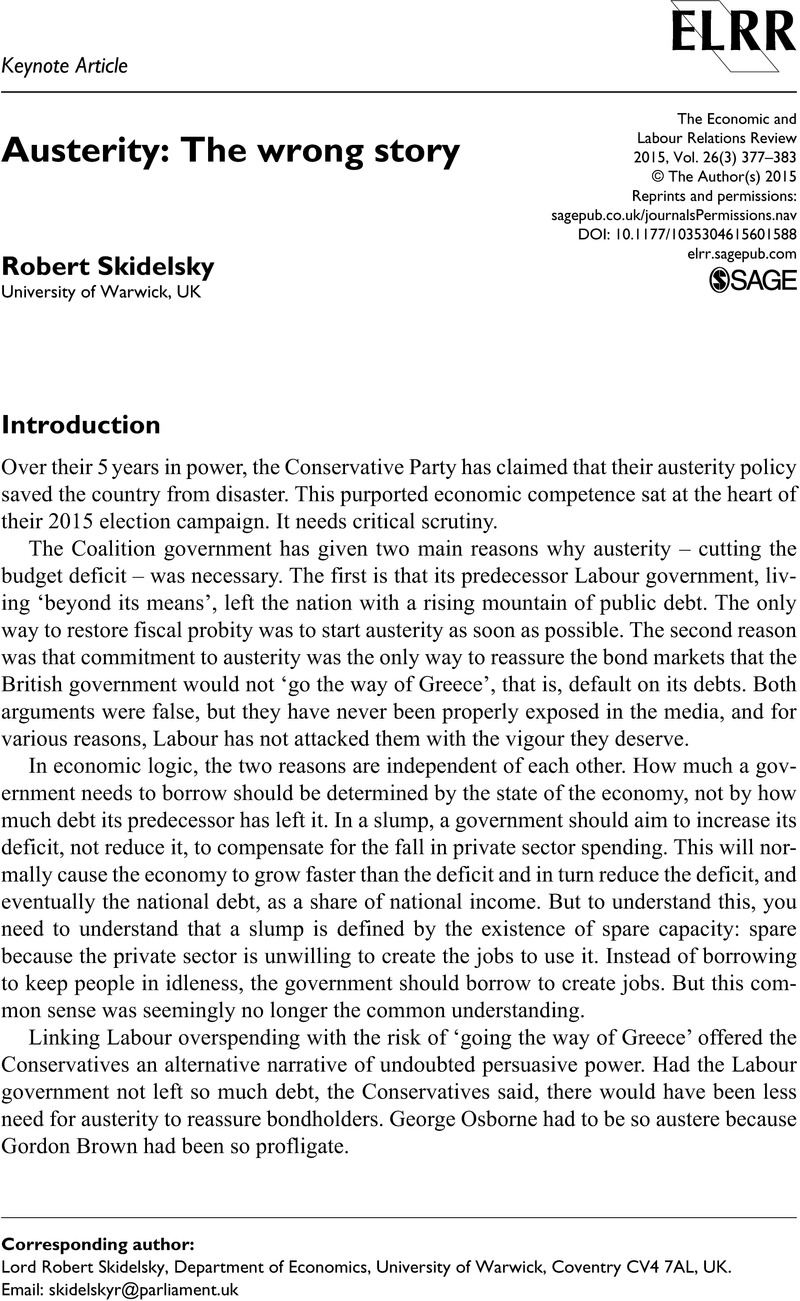Crossref Citations
This article has been cited by the following publications. This list is generated based on data provided by Crossref.
Colley, Linda
2016.
Reshaping the public service bargain in Queensland 2009–2014: Responding to austerity?.
The Economic and Labour Relations Review,
Vol. 27,
Issue. 1,
p.
81.
Bach, Stephen
2016.
Deprivileging the public sector workforce: Austerity, fragmentation and service withdrawal in Britain.
The Economic and Labour Relations Review,
Vol. 27,
Issue. 1,
p.
11.
Lopes, João Carlos
and
do Amaral, João Ferreira
2017.
Self-defeating austerity? Assessing the impact of a fiscal consolidation on unemployment.
The Economic and Labour Relations Review,
Vol. 28,
Issue. 1,
p.
77.
Grant‐Smith, Deanna Chantal Cristina
and
Colley, Linda Katurah
2018.
Of ‘Strong’ Leadership, Crisis Communication, and Pooper Scoopers: Change in the Queensland Public Service Under Newman.
Australian Journal of Public Administration,
Vol. 77,
Issue. 2,
p.
236.
Colley, Linda
2019.
Employment Security in Public Services: A Political and Industrial Contest Over the Institutionalization of Employment Security in the Queensland Public Service.
Public Personnel Management,
Vol. 48,
Issue. 4,
p.
608.
Clifford, Ben
and
Morphet, Janice
2023.
Local authorities doing it for themselves: austerity, the direct provision of housing and changing central-local relations in England.
Local Government Studies,
Vol. 49,
Issue. 6,
p.
1218.



